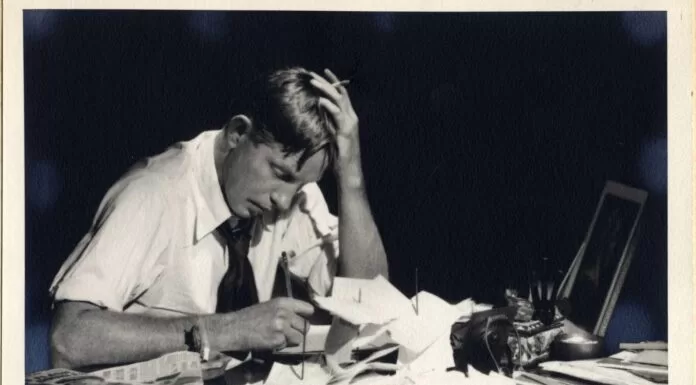The glitz. The glamor. The guernseys.
There aren’t many individuals who stood at the intersection of fiction writing and farming. More times than not, Wendell Berry is the only name that most people can think of. However, Berry himself was influenced by a man that, although nearly faded from the history books, was an extremely important figure in both worlds.
Louis Bromfield (1896-1956) was coming into his own at a time when it was good to be a writer and hard to be a farmer. His first novel, The Green Bay Tree, was published in 1924 and started a string of successfully received books. Before the time of movie stars and the veneration of athletes, being an acknowledged literary writer made one a celebrity. Winning the Pulitzer Prize in 1927 only cemented Bromfield’s literary status and brought him more acclaim.
Like many of the top American writers of the time, Bromfield moved to the Paris area and threw lavish parties that attracted guests of the uppermost social status. He was noted for being very comfortable in an expensive suit and reveled in such high-class environments. At the same time, however, the poor farming practices that eventually led to the Dust Bowl were already making American agriculture unproductive and farms were beginning to struggle. This also pulled on Bromfield.
Bromfield had a passion for agriculture from a young age. He spent his childhood working on his grandfather’s farm in Mansfield, Ohio, and later enrolled in Cornell University to study agriculture. Bromsfield’s father’s business collapsed, however, and Louis had to leave college to help out at home. Eventually his parents were forced to sell their house and move to his grandfather’s farm. There he got to practice farming—his passion, but also got a taste for how difficult it had become. He spent a year trying to make his grandfather’s farm produce enough to survive, but failing to break even, he left for Columbia University to chase his second aspiration: to become a writer.
Bromfield built elaborate gardens on his estate near Paris and eventually learned additional gardening techniques from his peasant neighbors. In the 1930s he also went to India twice to learn more about horticulture—once to a soil institute, and another time to the large estate of a high-ranking Indian official. In India he first came across organic farming methods that he would later incorporate into his own ideas about growing crops. Eventually, Bromfield’s gardens were not enough for him. Although he seemingly had it all, in the end he couldn’t shake his first love.
In 1938 Louis Bromfield left the elites in France and returned to Ohio, buying 600 acres of worn-out fields that he named the Malabar Farm. There, he practiced the principles of soil conservation that were fairly nascent in the country at the time. He restored the land using methods such as no-till farming, strip cropping, contour plowing and green manure. He called these practices part of the “New Agriculture” he promoted. He wanted to show farmers that these methods were productive, accessible, and still used all the latest technology. Today these notions are commonplace. Back then, they were radical.
Malabar Farm was dubbed “the most famous farm in America” back then, a title that was only aided by the fact that Humphrey Bogart and Lauran Bacall were wedded there. Every weekend Bromfield gave tours and lectures on the farm, the property receiving approximately 20,000 visitors each year from around the world. There, he showcased the health of his crops and cattle as proof that the New Agriculture was the way forward. Bromfield also used his status, and that of Malabar Farm, to promote the work of other agricultural reformists.
The last years of Bromfield’s life were not as kind to him as the rest had been. His later works were not as well received, and he began to run into financial trouble—in part from trying to maintain the extravagant lifestyle he once had in Paris. Finally, his health deteriorated, and he passed away from multiple myeloma at the age of 59.
In many ways it is strange—and probably also unfortunate—that Louis Bromfield is seldom known among those in either current literary and agricultural circles, despite being immensely important in both. Other Pulitzer Prize winners from the same era, such as Edith Warton, Willa Cather and John Steinbeck, remain household names today. In the same way, all the conservation techniques that Bromfield is responsible for are widely used and recognized as best practice for agriculture. However, only a few farmer-writers such as Wendell Berry give credit to Bromfield.
Regardless, even if time has moved on without him, Louis Bromfield is there to be discovered in his written works, at the state park that Malabar Farm has been turned into, and in the progress he has left behind in farming.
And, in the occasional column written about him.
Next time you drink something fancy raise your glass to Louis Bromfield.
This article is part of The Milk House Column series, published in print across four countries and two languages. It can also be found at themilkhouse.org.
This article appeared in a similar form in Progressive Dairyman .
Ryan Dennis is the author of the novel The Beasts They Turned Away.

